Invented by Joseph W. Morgan, II Nunzio Peter Pagano, Allen Ronald Rufolo, Rahul A. Patel, Jonathan Jackson, Wellovate LLC
One of the main drivers of the XR health market is the increasing demand for remote healthcare services. With the COVID-19 pandemic, many patients are hesitant to visit healthcare facilities in person, and healthcare providers are looking for ways to provide care remotely. XR technology can be used to create virtual clinics, where patients can consult with healthcare professionals from the comfort of their own homes. This not only reduces the risk of infection but also improves access to healthcare for patients who live in remote or underserved areas.
Another key driver of the XR health market is the growing interest in using immersive technologies for medical training and education. Medical students and healthcare professionals can use XR technology to simulate medical procedures, practice surgical techniques, and learn about complex medical conditions in a safe and controlled environment. This can help to improve the quality of medical education and training, as well as reduce the risk of medical errors.
The XR health market is also benefiting from the increasing availability of affordable XR devices, such as VR headsets and AR glasses. As the cost of these devices continues to decrease, more healthcare providers and patients will be able to access XR technology for medical purposes.
However, there are also some challenges that need to be addressed in the XR health market. One of the main challenges is the lack of standardization and regulation in the industry. As XR technology is still relatively new in the healthcare sector, there are no clear guidelines or standards for how it should be used. This can create confusion and uncertainty for healthcare providers and patients, and may also pose risks to patient safety.
Another challenge is the need for more research to demonstrate the effectiveness of XR technology for medical purposes. While there is growing evidence to suggest that XR technology can improve patient outcomes and reduce healthcare costs, more research is needed to fully understand its potential benefits and limitations.
Despite these challenges, the XR health market is expected to continue to grow in the coming years. According to a report by MarketsandMarkets, the global market for XR in healthcare is expected to reach $2.4 billion by 2023, with a compound annual growth rate of 36.6% from 2018 to 2023. This growth is being driven by the increasing demand for remote healthcare services, the growing interest in using immersive technologies for medical training and education, and the availability of affordable XR devices.
In conclusion, the market for XR health platforms, systems, and methods is a rapidly growing industry that has the potential to revolutionize the healthcare sector. While there are some challenges that need to be addressed, the benefits of using XR technology for medical purposes are clear. As more healthcare providers and patients recognize the potential of XR technology, we can expect to see continued growth and innovation in this exciting field.
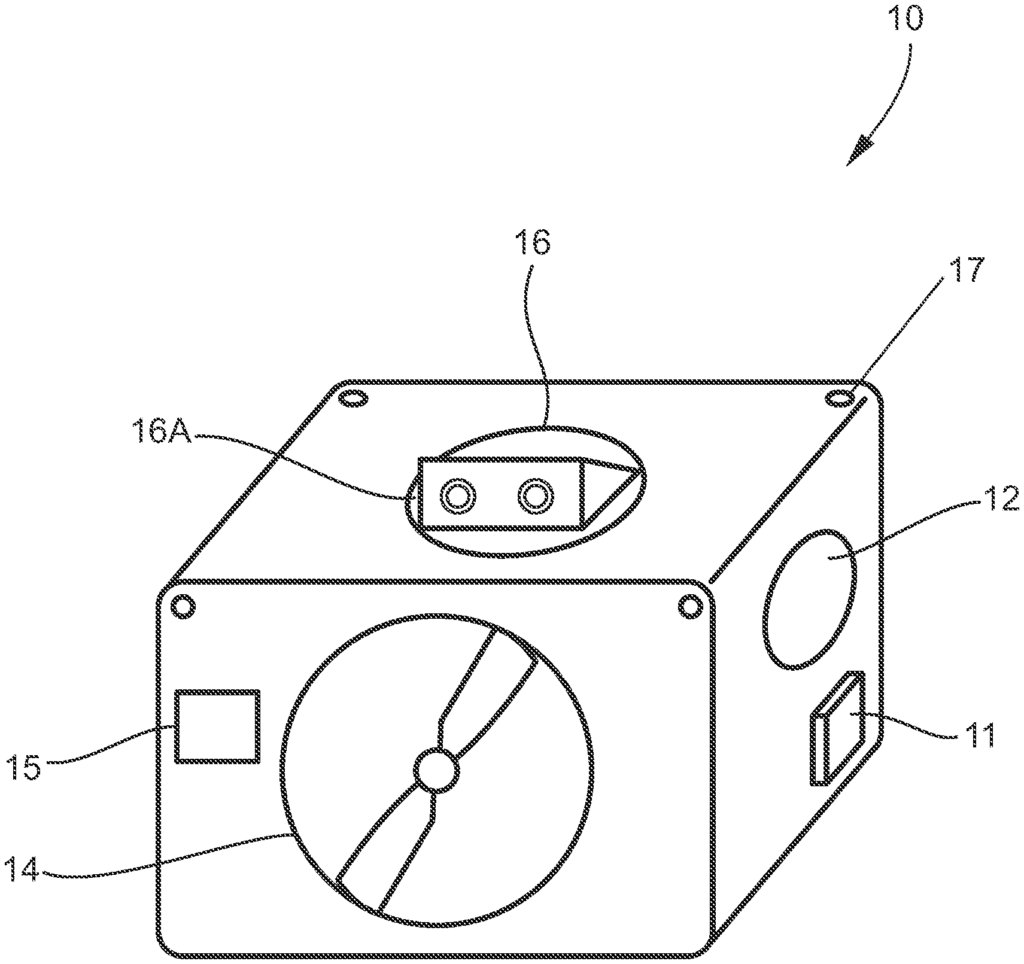
The Wellovate LLC invention works as follows
The modular computer-implemented XR platform is adapted to diagnose, treat, and provide care for patients. The platform incorporates modules such as a clinical platform, XR module and web portal, companion application module. Other modules include a light module and an anatomy module. The combined extended reality display device and computing device is adapted to implement one or more modules.
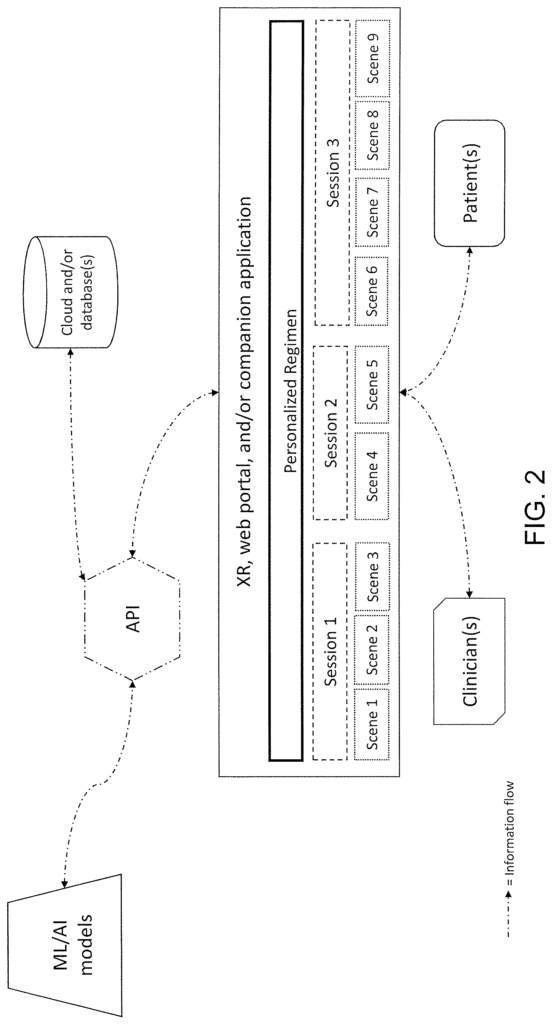
Background for XR Health Platform, System and Method
Below are a number of exemplary embodiments. The term “exemplary” is used. The term ‘exemplary’ means only illustrative, or as an example. Any reference to the?invention? It is not intended that the invention be limited to the exact features or steps disclosed in any of the exemplary examples described in the specification. Referring to an?exemplary embodiment? ?one embodiment,? ?an embodiment,? ?various embodiments,? The phrase ‘various embodiments’ may be used to indicate that a certain feature, structure or characteristic may be included in the described embodiment, but it does not mean that every embodiment will include the feature, characteristic or structure. The phrase “in one embodiment” is also repeated. The phrase ‘in one embodiment’ or ‘in an exemplary example of embodiment? They may not refer to the exact same embodiment. The words “patient”, “user”, “clinician”, and other individuals are intended to be gender neutral, regardless of whether they use the word ‘he’, ‘himself? The words ‘he?, ‘him?,?himself? “Or the like.
It is noted that words like “preferably”, “commonly” and “typically” are also used. The terms used herein are not intended to limit the scope or imply that some features are essential or important to the function or structure of the invention. These terms are intended to emphasize alternative or additional features which may or may be used in a specific embodiment of the invention.
According to an exemplary embodiment of the present disclosure, it comprises a health platform, system, and method based on extended reality (XR).
ABBREVIATIONS and DEFINITIONS
The following written descriptions and definitions are included in this specification.
?ID? “?ID?
?GUID? “?GUID?
?UI? “?UI?” means “user interface.
?2D? means two-dimensional.
?3D? “3D” means three-dimensional.
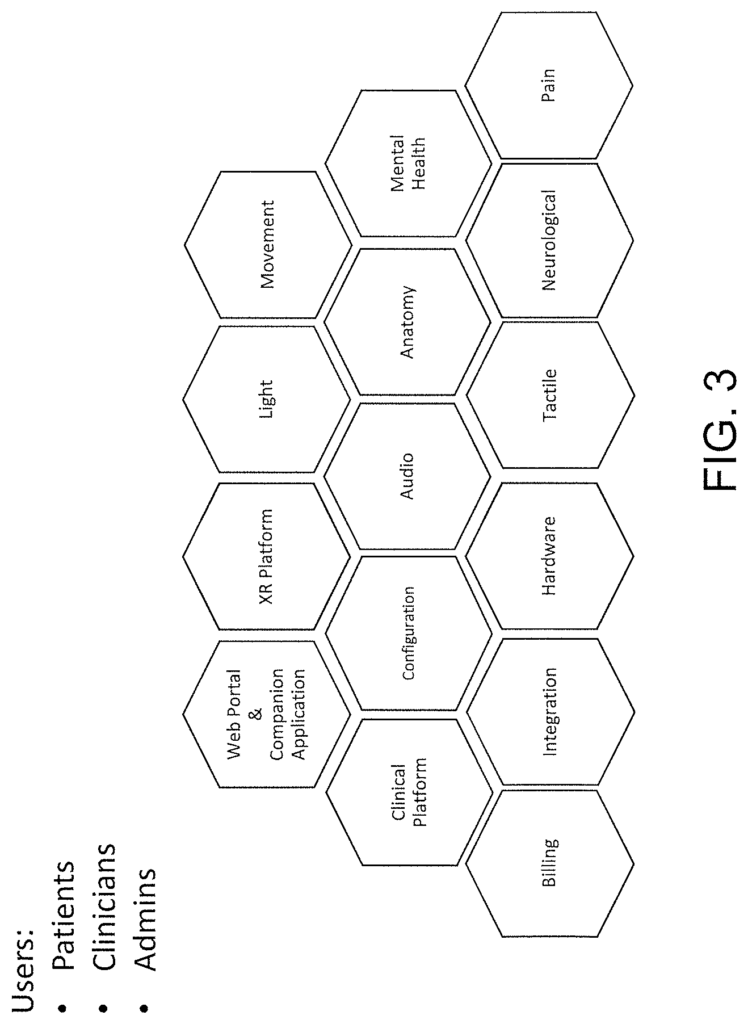
?API? means Application Programmer Interface.
Extended reality (XR), also known as “Extended Reality” (XR), is a term used to describe any real-world and virtual combined environment, human-machine interactions generated by technology. This includes all two-dimensional (2D) and/or three dimensional (3D) content or features. refers to any real-world-and-virtual combined environment and human-machine interactions generated by technology, including any two-dimensional (2D) and/or three-dimensional (3D) content and/or features. XR encompasses virtual reality (VR), augmented or mixed reality (MR), 2D and 3D content (including using a computer screen, television and/or other 2D viewing devices), platform features and/or the XR Platform. “For clarity, XR includes all platform features, scenes and sessions, regimens and content that can be simulated and accessed through XR devices and companion applications.
?XR device? “XR device” is any device capable of simulating, viewing or engaging XR content, and/or controlling, experiencing, or interacting with it. This includes headsets (HMD), augmented-reality glasses, 2D screens viewing XR, 3D screens, computers, controllers and projectors as well as other interaction devices such mobile phones, speakers, mics, cameras, headphones and haptic devices.
?Clinician application? Refers to a particular embodiment of the companion application described in this document. When referred to as a ‘clinician application,’ it means the same thing. This is a portion of the XR system that allows clinicians to interact, control, observe and monitor instances of the platform’s patient-facing portions. The clinician application can run on XR-enabled devices.
?HMD? “HMD” means head-mounted displays.
?Supervised? “?Supervised?
?Semi-supervised? “?Semi-supervised? “May or may not need human input and/or evaluation.
?Unsupervised? “?Unsupervised? Unsupervised means that it does not require human input or evaluation. The term “unsupervised” is used to describe a system that does not require human input or evaluation. It can also be used in the context of ML/AI, referring to models that identify signals, patterns and/or results without requiring any human input.
?Scene? “?Scene?
?Session? “?Session?
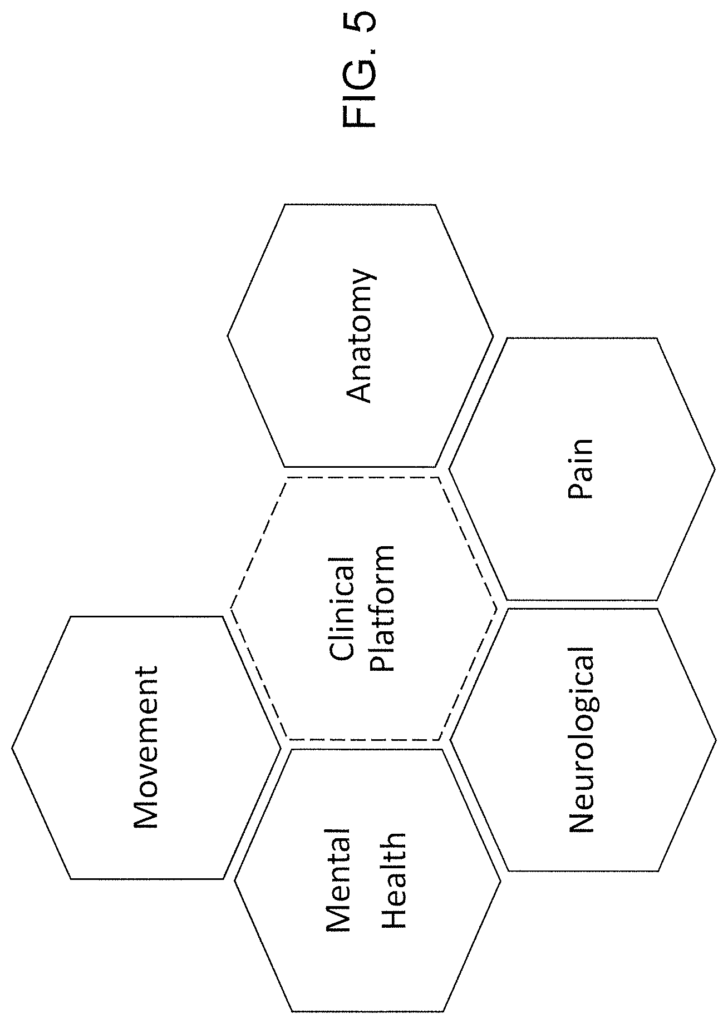
?Scene data? “Scene data” refers to any measurable or available data from the scene.
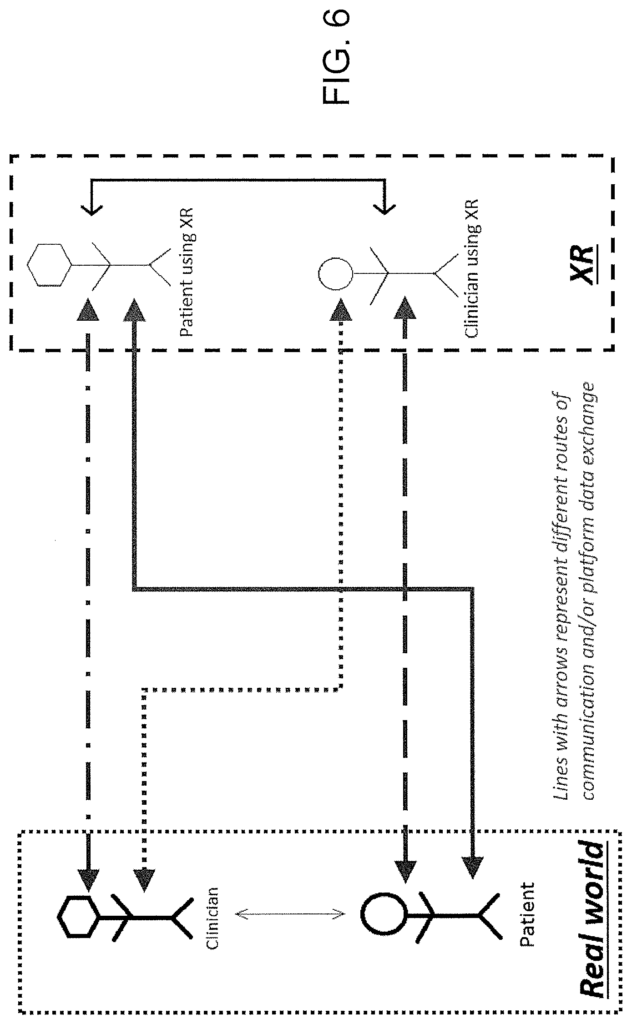
Click here to view the patent on Google Patents.
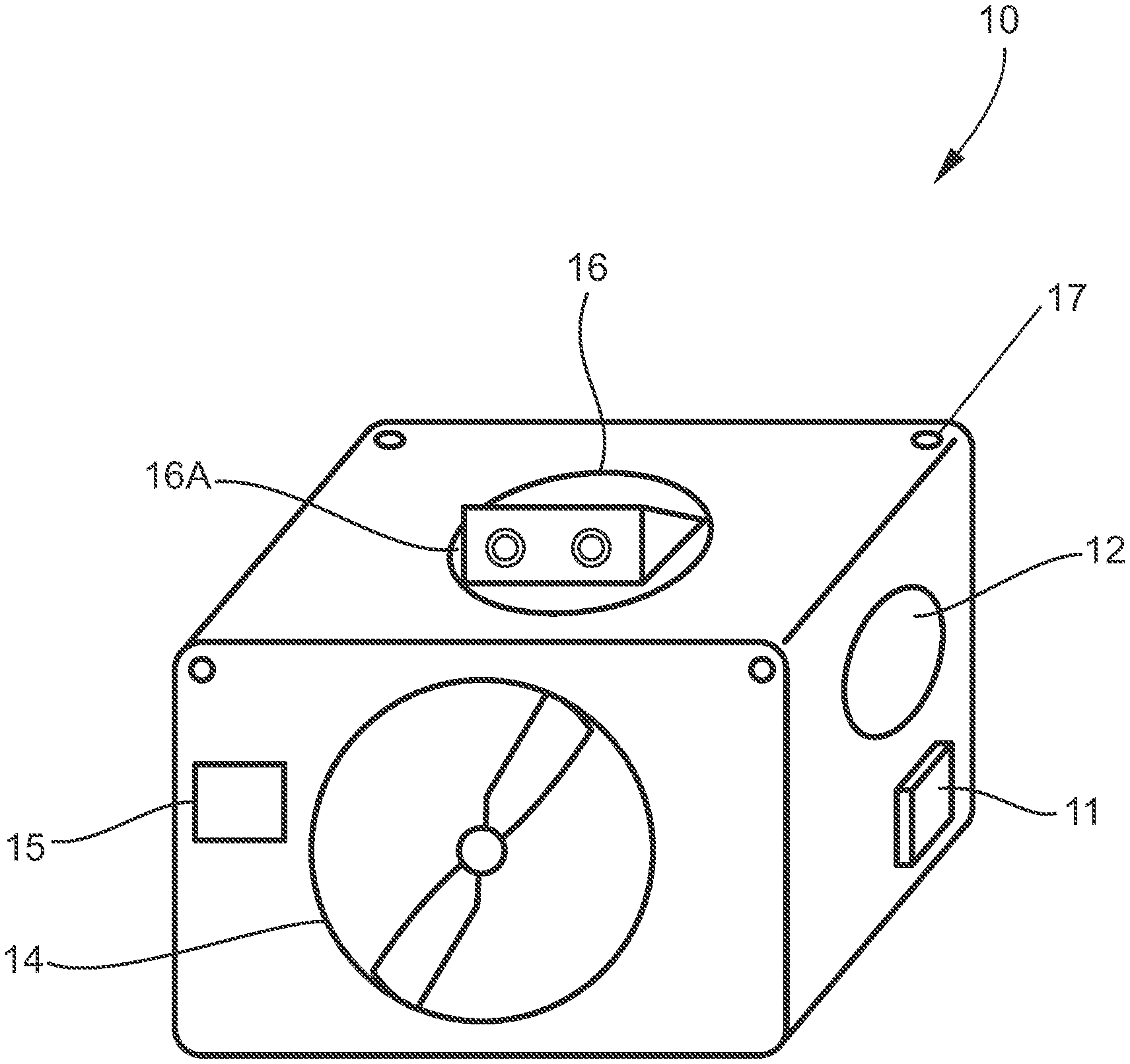
Leave a Reply